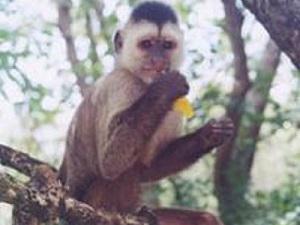Liza Maria Veiga
Other projects
10 Jul 2012
Distribution and Conservation of Remaining Populations of the Critically Endangered Ka’apor Capuchin Monkey (Cebus kaapori) in the Brazilian Amazon
The ka’apor capuchin (Cebus kaapori) ranks among the most endangered primates in Brazil. The goal of this project is to study the ecology, behaviour and distribution of this species, increase awareness of its conservation status and establish a small reserve at the eastern edge of its distribution.

Primates in the Brazilian Amazon, particularly those at the south-eastern rim of deforestation, are at increasing risk of extinction. One of the most threatened species, currently listed as Critically Endangered by IUCN, is the Ka’apor capuchin (Cebus kaapori). It is endemic to one of the most densely populated and deforested parts of the Amazon. What remains of its original range is under huge anthropic pressure and is completely fragmented. This is a rare species and occurs at low densities, it was only described in 1992 and to date has never been studied in detail, we know nothing about its ecological needs and are not even sure of its exact geographic range.
The objectives of this project are to:
Document distributional patterns of remnant populations of Ka’apor capuchin monkeys;
Provide the first data on the behaviour and ecology of the species;
Raise local and international awareness of the critically endangered status of Ka’apor capuchin monkeys;
Train young biologists to undertake research in Brazil;
Strengthening the project’s collaboration with the local hydroelectric company, private landowners and state/federal institutions;
Support the development of effective conservation strategies for this species and the habitat it inhabits.
This project will provide the first detailed information on the ecology and behaviour of the species. As the ka’apor capuchin is sympatric with another species of the same genus (Cebus apella), we believe that it may occupy a distinct niche and may have different, perhaps more specialist ecological needs. Information about its specific habitat preferences, diet, use of space, grouping patterns and social behaviour are all vital to be able to plan conservation programs and manage remaining populations. This knowledge combined with data gained on distributional patterns of remnant groups will be used to feed into models to test the viability of populations in different contexts. The project is part of a long-term effort to develop “Conservation Action Plans” for this and other threatened primate species in eastern Brazilian Amazonia.